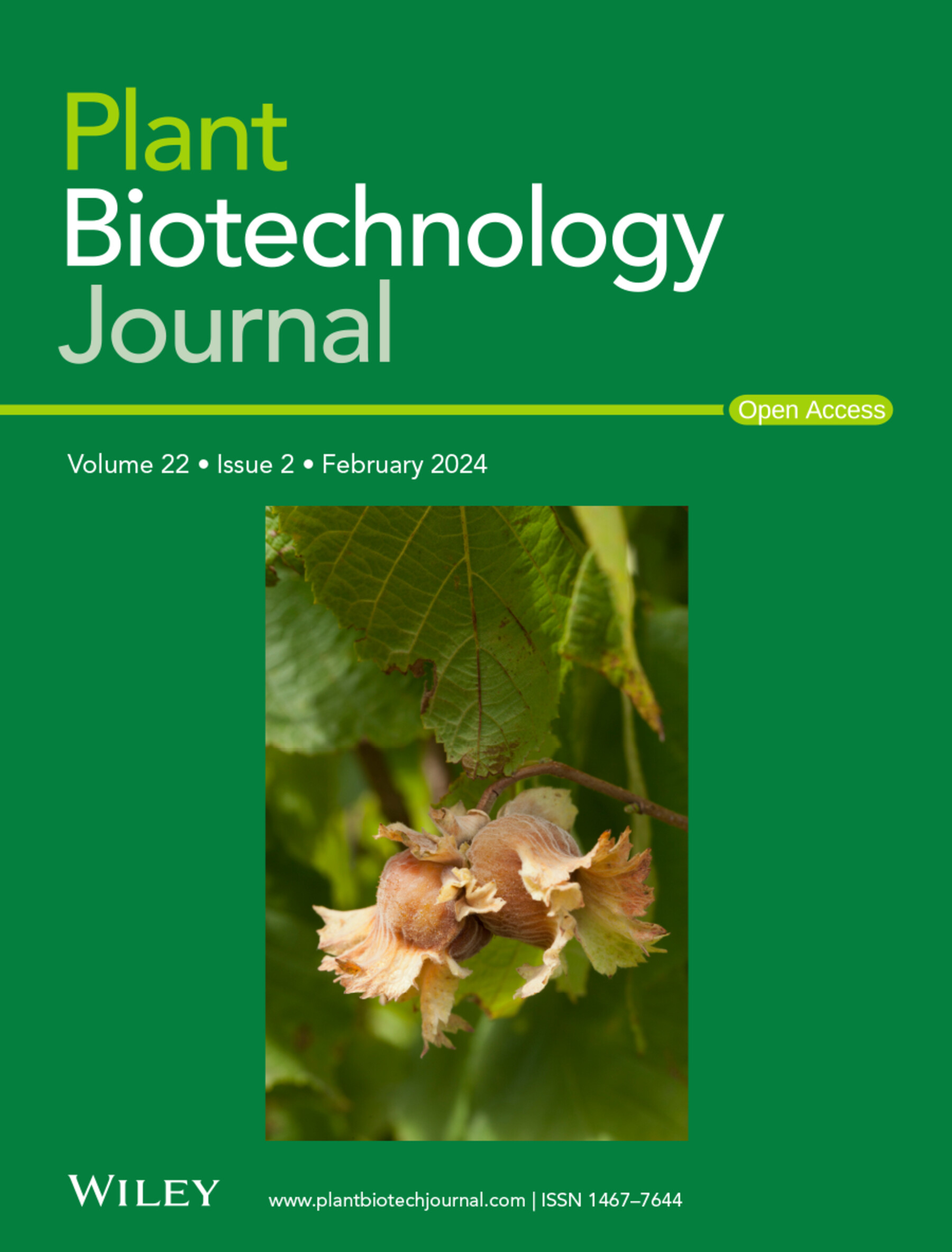LRM3 positively regulates stem lodging resistance by degradating MYB6 transcriptional repressor in soybean
IF 10.1
1区 生物学
Q1 BIOTECHNOLOGY & APPLIED MICROBIOLOGY
引用次数: 0
Abstract
SummaryStem lodging resistance plays a critical role in maintaining soybean yield stability, yet the molecular mechanisms governing stem development and lodging tolerance remain poorly understood. Here, we report the characterization ofLRM3通过降解MYB6转录抑制因子正向调节大豆茎秆倒伏抗性
系统抗倒伏在维持大豆产量稳定中起着至关重要的作用,但调控茎发育和抗倒伏的分子机制尚不清楚。在这里,我们报道了与倒伏相关的突变体3 (lrm3)的特性,这是一个弱茎大豆品系,表现出增加的倒伏敏感性。分子克隆表明,LRM3编码一个U - box E3泛素连接酶,该酶与转录因子MYB6物理相互作用,针对其进行26S蛋白酶体介导的降解。转录组学和染色质免疫沉淀分析表明,MYB6直接结合到苯丙氨酸氨裂解酶(PAL)基因的启动子区域,抑制其转录活性,从而减少木质素的生物合成和茎中的次生细胞壁沉积。群体遗传分析发现LRM3主要有三种单倍型,其中单倍型1在地方品种和现代品种中优先保留,表明驯化过程中存在人工选择。总的来说,我们的研究结果阐明了一种以前未被描述的调节机制,该机制整合了泛素介导的蛋白质水解和苯丙类代谢,以增强茎的机械强度。该研究为提高大豆育种中的抗倒伏性提供了新的遗传见解和分子工具。
本文章由计算机程序翻译,如有差异,请以英文原文为准。
求助全文
约1分钟内获得全文
求助全文
来源期刊

Plant Biotechnology Journal
生物-生物工程与应用微生物
CiteScore
20.50
自引率
2.90%
发文量
201
审稿时长
1 months
期刊介绍:
Plant Biotechnology Journal aspires to publish original research and insightful reviews of high impact, authored by prominent researchers in applied plant science. The journal places a special emphasis on molecular plant sciences and their practical applications through plant biotechnology. Our goal is to establish a platform for showcasing significant advances in the field, encompassing curiosity-driven studies with potential applications, strategic research in plant biotechnology, scientific analysis of crucial issues for the beneficial utilization of plant sciences, and assessments of the performance of plant biotechnology products in practical applications.
 求助内容:
求助内容: 应助结果提醒方式:
应助结果提醒方式:


